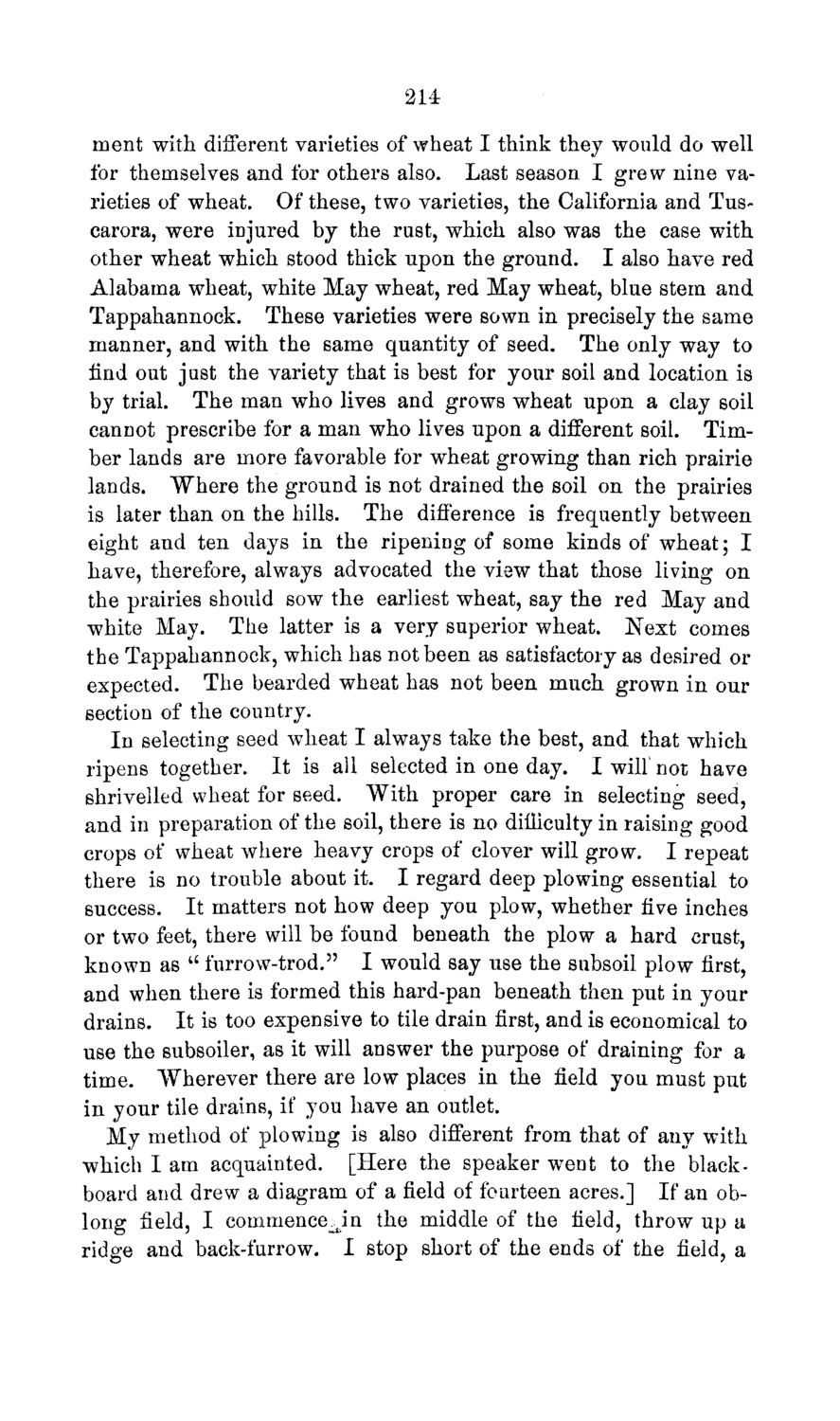| |
| |
Caption: Board of Trustees Minutes - 1869
This is a reduced-resolution page image for fast online browsing.

EXTRACTED TEXT FROM PAGE:
214 ment with different varieties of wheat I think they would do well for themselves and for others also. Last season I grew nine varieties of wheat. Of these, two varieties, the California and Tuscarora, were injured by the rust, which also was the case with other wheat which stood thick upon the ground. I also have red Alabama wheat, white May wheat, red May wheat, blue stem and Tappahannock. These varieties were sown in precisely the same manner, and with the same quantity of seed. The only way to find out just the variety that is best for your soil and location is by trial. The man who lives and grows wheat upon a clay soil cannot prescribe for a man who lives upon a different soil. Timber lands are more favorable for wheat growing than rich prairie lands. "Where the ground is not drained the soil on the prairies is later than on the hills. The difference is frequently between eight and ten days in the ripening of some kinds of wheat; I have, therefore, always advocated the view that those living on the prairies should sow the earliest wheat, say the red May and white May. The latter is a very superior wheat. Next comes the Tappahannock, which has not been as satisfactory as desired or expected. The bearded wheat has not been much grown in our section of the country. In selecting seed wheat I always take the best, and that which ripens together. It is all selected in one day. I will not have shrivelled wheat for seed. With proper care in selecting seed, and in preparation of the soil, there is no difficulty in raising good crops of wheat where heavy crops of clover will grow. I repeat there is no trouble about it. I regard deep plowing essential to success. It matters not how deep you plow, whether five inches or two feet, there will be found beneath the plow a hard crust, known as u furrow-trod." I would say use the subsoil plow first, and when there is formed this hard-pan beneath then put in your drains. It is too expensive to tile drain first, and is economical to use the subsoiler, as it will answer the purpose of draining for a time. Wherever there are low places in the field you must put in your tile drains, if you have an outlet. My method of plowing is also different from that of any with which I am acquainted. [Here the speaker went to the blackboard and drew a diagram of a field of fourteen acres.] If an oblong field, I commence^in the middle of the field, throw up a ridge and back-furrow. I stop short of the ends of the field, a
| |